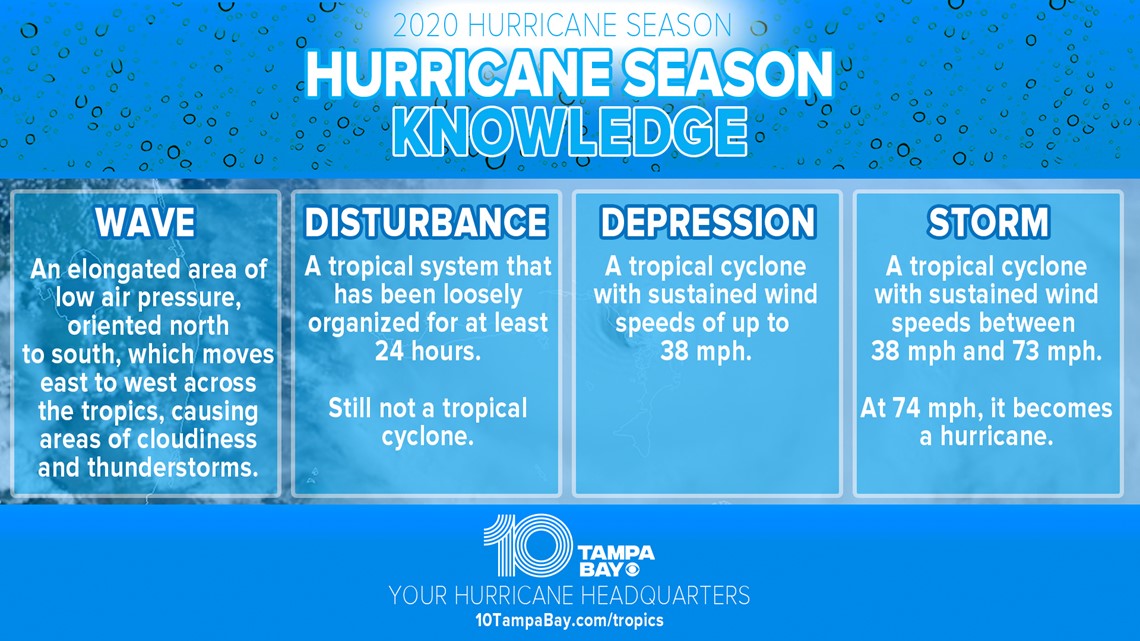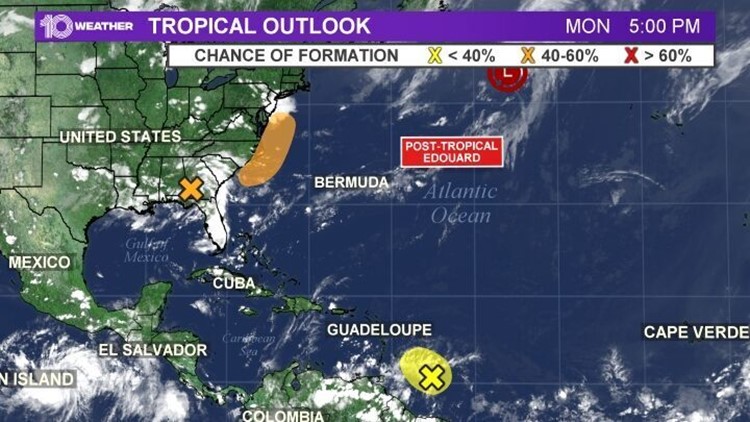Another storm, another record. The 2020 Atlantic Hurricane Season is expected to be a very active season and, so far, it has been even though the peak of hurricane seasons is still many weeks away.
We typically peak in August. Sunday night, Tropical Storm Edouard became the earliest fifth named tropical storm in an Atlantic hurricane season.
Now, a tropical disturbance, called “Invest 98L” or Tropical Depression 1, is moving through south Georgia bringing showers and storms to the area. Once the disturbance moves off the Georgia coast, Invest 98L has a 40 percent chance of tropical cyclone formation within the next 5 days and a 10 percent chance within the next 48 hours.
Another tropical depression, Tropical Depression 2, is also being tracked a few hundred miles east of the Windward Islands.


But, what exactly is a tropical disturbance, and what makes it different from a tropical wave, depression or storm? Let’s break them down.
WAVE: A tropical wave is often the very first thing that meteorologists track in developing tropical storms or hurricanes. A tropical wave is an elongated area of low air pressure, oriented north to south, which moves east to west across the tropics, causing areas of cloudiness and thunderstorms.
DISTURBANCE: A tropical disturbance, is a loosely organized group of thunderstorms that has been around for at least 24 hours. These systems typically bring scattered showers and thunderstorms into an area. Tropical disturbances aren’t tropical cyclones, but with the right conditions, it is possible for them to strengthen into a tropical cyclone.
DEPRESSION: When a tropical disturbance strengthens and becomes more organized, it becomes the weakest tropical cyclone: a tropical depression. Tropical depressions are more organized with clear rotation.
STORM: Once wind speeds in the tropical depression to at least 38 mph, it becomes a tropical storm. Tropical Storms have wind speeds between 39 mph and 74 mph. Once a system is a tropical storm, it receives a name. Once a storm reaches sustained wind speeds of at least 74 mph, it’s classified as a category one hurricane. When a tropical cyclone weakens, the storm is then called a post-tropical cyclone. Tropical Storm Edouard became post-tropical today.
- Coronavirus in Florida: State reports another 6,336 new cases, 48 more deaths
- Pasco County gentlemen's club catches on fire
- Everything to know about the new St. Pete Pier opening, including how to get a reservation
- Police identify men struck by lightning on Clearwater Beach
- Bellagio error may be biggest sportsbook loss in Vegas history
- Clearwater Fire Medics deliver baby boy on Courtney Campbell beach
- Deadly amoeba that destroys brain infects person in Hillsborough County, health department warns
- Man in famous 9/11 photo dies of coronavirus in Florida
►Stay In the Know! Sign up now for the Brightside Blend Newsletter





